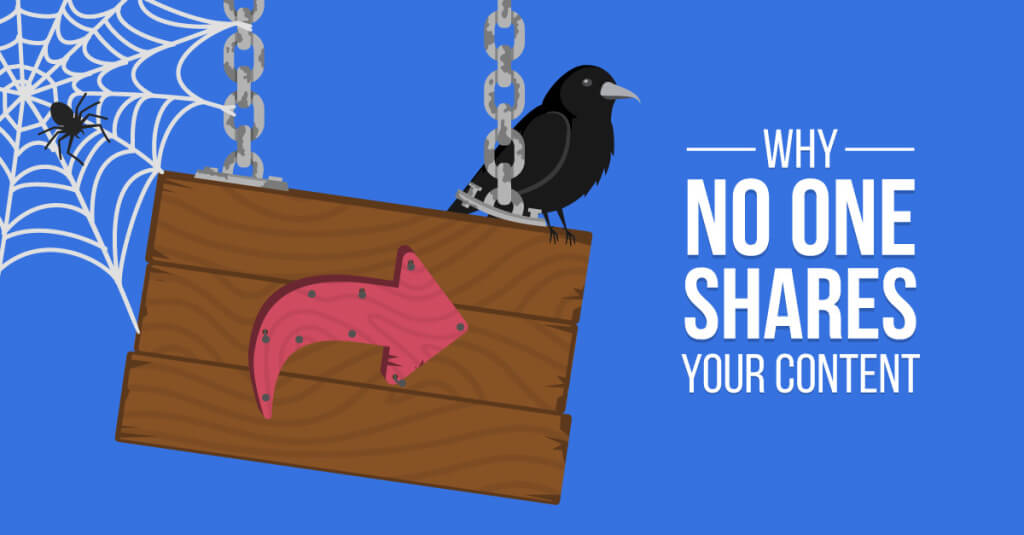
14 Dec Why No One Shares Your Content (And How to Fix It)
[ad_1]
Sharing isn’t everything.
Revenue’s better.
But content sharing indicates a deeper emotional attachment, providing a very transparent way to quantify the emotional appeal your content has (or lacks).
And online, content is everything. From the headline on your homepage to the magic behind your Facebook ad creative.
Content-driven marketing has been around since the golden days of Mad Men. But today, there’s a deluge of it flooding your customer’s attention spans.
The best way to cut through the clutter is to address these three common mistakes below.
But first, it’s important to understand why people share in the first place to see how you can fix those mistakes once and for all.
Why People Share
1.44 billion people a month spend roughly 20+ minutes each day on Facebook, according to Business Insider.
Apparently, people don’t just share because they’re narcissists (well, maybe a little). But because social interactions on Facebook help replicate (sometimes even replace) the face-to-face communication that we all crave on a basic, fundamental DNA level.
Turns out, there’s a mind-numbing amount of research popping up to explain why so many people do this, so consistently. To name a few:
Facebook (like most social networks) rewards novelty and recency. That’s why a home “feed” of most recent network activity basically personalizes your every visit. The notifications, of friend request connections, interactions with your content, and more, create an open loop that acts like an attention tractor beam.
There is a chemical reaction we have while surfing Facebook, like pupil dilation, which is a psychological indication of happiness. Spending time on Facebook makes us feel better. Literally. The emotions that others share online (like positive or negative comments) are even contagious, impacting people across boundaries.
Asynchronous interactions we have on Facebook, while almost as powerful as synchronous, face to face communication, are also less mentally taxing. So it’s easier to have more conversations, with more people, over a longer period of time.
Humans are inherently social, and online communities (just like offline tribes from centuries ago) make us feel like we belong.
So why do people share?
People share because it makes them feel topical, relatable, and emotionally engaged with other people. In other words, people share because it makes them feel more human.
However…
We’re also busy. And stressed. And multitasking. Our attentions spans are less than a goldfish.
That means if you want to capture attention, get people to emotionally engage, and then recommend or talk about it with their friends, then you’re going to have to cut through all the clutter.
And avoid these common mistakes.
Mistake #1: Prioritizing Cleverness over Clarity
In 2007, the Heath brothers published Made to Stick to explain why some ideas catch and take off, while others are ignored. In one of the opening chapters, they quickly dispel a popular myth around what successful advertisements have in common (spoiler alert: it’s not “creativity” or being overly clever).
“In 1999, an Israeli research team assembled a group of 200 highly regarded ads — ads that were finalists and award winners in the top advertising competitions. They found that 89 percent of the award-winning ads could be classified into six basic categories, or templates.
The researchers also tried to classify 200 other ads — from the same publications for the same types of products — that had not received awards – and they were only able to classify 2%.”
What are they saying?
The most successful ads followed a few basic templates or patterns. For example, the “This is Your Brain on Drugs” commercials followed a template dealing with extreme consequences. While those that deviated too far from the norm were almost unrecognizable to people.
Using intrigue and mystery can help get attention. Humor also helps, as evidenced by this Awesome Tees example:
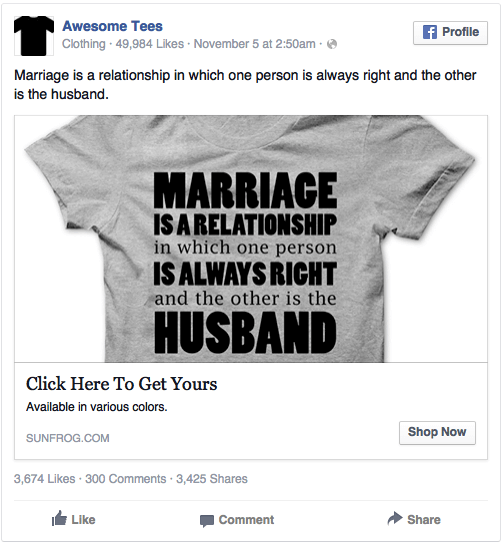
But the good news, is that you don’t have to reinvent the wheel each time. For example, the best Calls To Action (CTAs) are generally simple and straight to the point.
Nordstrom does a great job of this, highlighting WHAT (UGG boots), HOW MUCH (25% off), and WHERE (click the link to show now). Doesn’t get much easier than that for customers.
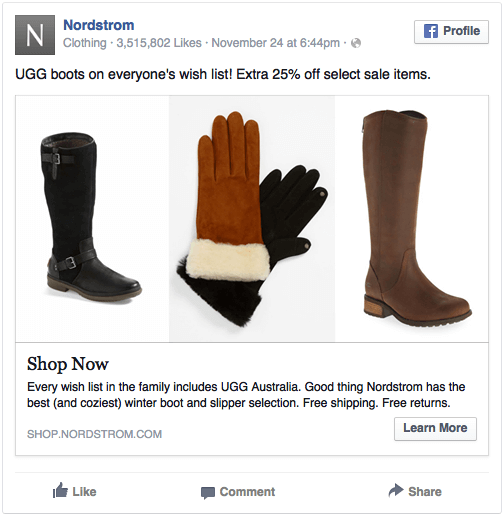
Clarity over cleverness is easy in a B2C, retail or eCommerce environment. So what about more complex businesses with longer sales cycles?
Data company PayScale has successfully landed a few infographics on Mashable, like this one on how employers feel about social media, which was shared almost 8,000 times.
Yes, the infographic design and statistics were great. But the real winner? The narrative.
They use a great, hot button topic that (at least historically) was extremely popular to discuss and debate. As evidence, there are 79 million results out there just like it:
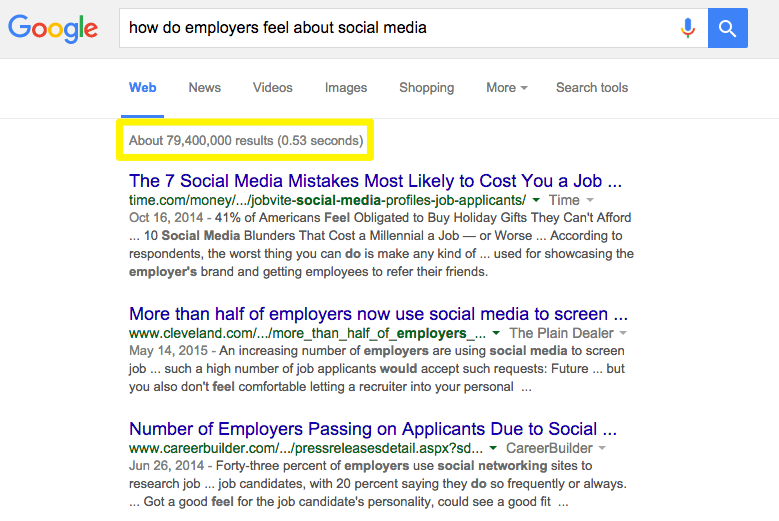
Another perfect example of using proven storylines or ideas is helping people protect themselves from being over-taxed unfairly, which is one of the oldest narratives in the book (remember that whole Boston Tea Party thing?).
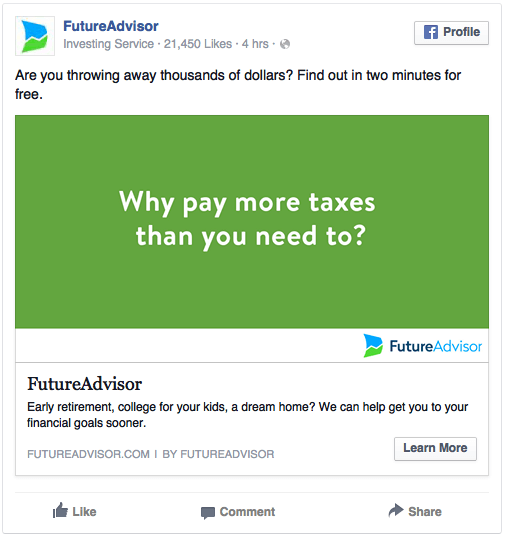
FutureAdvisor does a great job tapping into this controversial topic while helping people protect themselves from the external threat. When positioned like this, who WOULDN’T want to click and find out?!
If you don’t have to create something completely new or original, how do you still come up with a unique angle on a tried-and-true topic – in order to stand out from the rest?
You narrow the focus onto specific types of people, not a generic audience.
Mistake #2: Focusing on an Audience, Instead of a Person
When you look at what succeeds on Facebook, and compare that with the research we just discussed, then it’s no surprise that the most shared content is interesting, important, or funny – in some deeply personalized way.
The best marketing focuses on the right person, at the right time, with the right message. That’s why incorporating personalization online – through retargeting ads, marketing automation emails, and even “recommended products” on eCommerce stores – are among the most profitable tactics you can implement.
On way to quickly personalize your website content and messaging is to be more polarizing.
The ex-CEO of Abercrombie and Fitch came under fire years ago for insensitive comments where he was discriminating against… well, everyone who wasn’t white. But despite his less than sensible approach, he was right. In a way. By stating who you’re against, you can help polarize a large group of people into either buying-in, or getting out of the way.
PETA is a polarizing organization. You’re either with them or against them. Most feel strongly one way or the other. Subtly Vegan is taking a page from their playbook by using a specific type of content (cute animals and bold language) to generate interest.
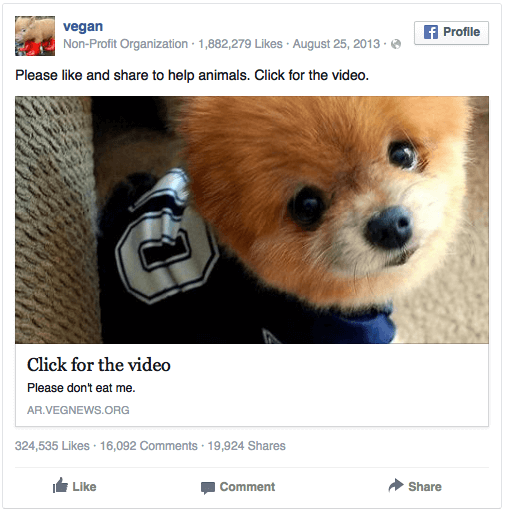
Of course, no one would eat that little adorable thing. But the image combined with direct, blunt language is arresting. Simple, effective, and to the point.
Another way to appeal to a specific person is to show intended use cases. For example, GearBest shows a product in use while troubleshooting a plumbing problem. Guess who they’re targeting?
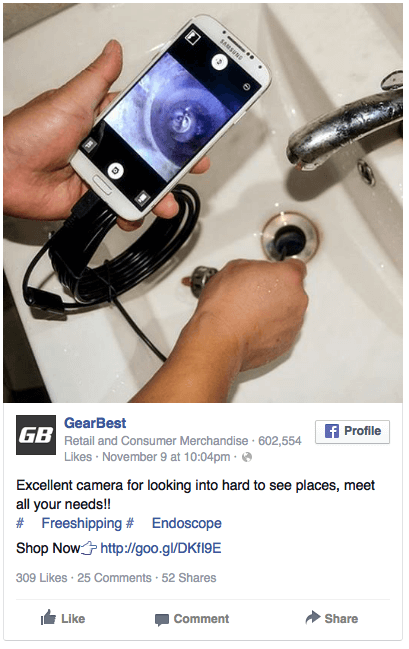
Now of course, women could theoretically want a product like this to troubleshoot plumbing. If you DO have an example of a woman who loves getting their hands dirty with plumbing, then please share it, so I can have a built-in excuse the next time my wife wants me to fix the leaking sink.
But MOST, probably, do not. This immediately jumps out at certain people (like men in their 40-60s), while others (like most females) will ignore it completely. That’s a good thing! This content will end up resonating much more with the intended audience because of it (which typically results in better sales).
American Express has many different customer segments, all over the globe. Years ago, they created the OPEN Forum, to focus on one particular segment (small businesses) and address the needs and characteristics of them alone. It quickly shot up to 10 million pageviews in 2010 after starting.
That means one of the largest online media properties aimed at small businesses (a profitable market) isn’t owned by a traditional media conglomerate like Forbes or the Wall Street Journal. But a finance company.
And the reason it’s so successful, is because there’s no mention of financing or credit cards in particular. Here’s why.
Mistake #3: Selling the Hammer, Instead of the Hole
I don’t get hardware stores.
I mean, I understand them. But they’re not for me. They’re not always super clean. And there’s no Starbucks inside (unlike Target. Don’t get me started on Target).
I hope that doesn’t call my manhood into question.
For most people, the products that a hardware store sells are a means to an end. There’s not a lot of personal affinity towards a hammer or dishwasher. We literally don’t care what drill model when purchasing.
Just as long as it can make a hole big enough to hang your flat screen TV above the fireplace. Or hang pictures on our walls to make our home feel more cozy. Or automatically wash our dishes so we don’t have to do it by hand.
Lowe’s understands this and works very hard to use content to sell the outcome or end result (not the product itself).

In other words, use content marketing to sell the hole, not the hammer (or the nails).

The best content and ads (not only for social shares, but also selling) should always focus on the concrete outcome, and contrast where someone is now, with where they COULD be.
FutureAdvisor again does a great job of this, using a simple graph to show where you’re at currently, with where you should (no – DESERVE) to be.
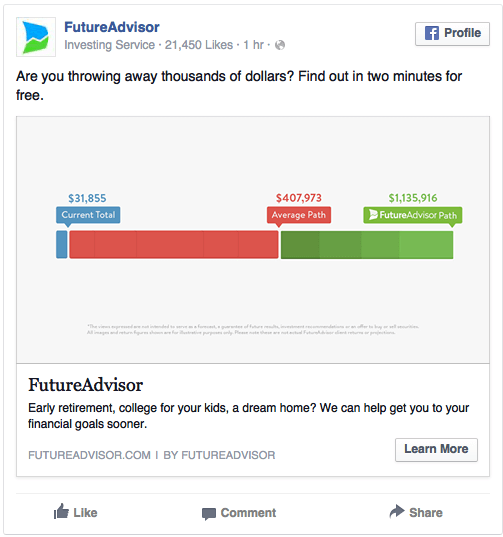
Another great example is from Zipcar, which highlights what they take away from customers (namely those long, sketchy rental car contracts, gas, and insurance). They’re also doing this for a very specific customer segment (see #2 above), college students and millennials, at the same time.
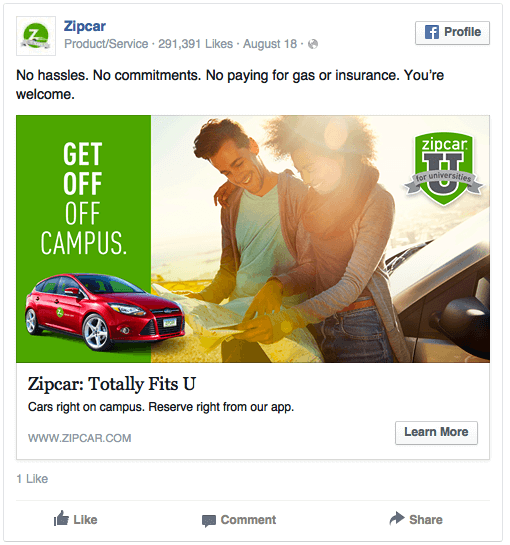
And to top it all off:
Why sell terrible food, grabby TSA personnel, and ever-shrinking rows of seats when you can sell… Maui.

Thanks, Virgin America. Excuse me while I go empty my bank account.
Conclusion
There are two million blog posts published each day. That’s why those generic, 500-word posts no longer deliver the goods.
The same is true for ALL content today, whether that’s offline, print, social updates, emails, or Facebook ads.
The only stuff that stands out today, gets attention, and gets shared, is the stuff that sells such an unbelievable end result, to a very specific person, simply and clearly, that it can’t help NOT getting shared.
At the end of each day, you should constantly try to make your content more specific, more targeted, and more valuable than the last one. This is the best path out of a world filled with clutter and over-stimulated customers who are trying to shut off ads at every corner.
Otherwise, you’re just wasting your time.
[ad_2]
Source link
Social Media Agency, Social Media, Digital Marketing, Digital Marketing Agency, Search Engine Marketing, SEO, digital marketing agency dubai, video content marketing, crossfit marketing dubai, video marketing dubai, digital marketing agency abu dhabi, facebook marketing dubai, facebook marketing abu dhabi, digital marketing agencies in dubai, social media agency, content marketing dubai, content strategy dubai, branding dubai

